Volcano Live
volcanolive.com
Mt Etna Volcano | Dr John Seach
Last updated: January 2026

Sicily, Italy
37.75 N, 15.00 E
summit elevation 3357 m
Complex stratovolcano
Mt Etna is Europe's largest and most active volcano, located on the east coast of Sicily, Italy. This complex stratovolcano rises over 3350 m and features persistent open-vent activity with frequent summit eruptions (Strombolian, lava fountaining/paroxysms) and periodic flank effusions. Known for its variety of eruptive styles and near-continuous degassing, Etna poses hazards primarily from lava flows, ashfall, and tephra, though populated eastern flanks are at risk during flank eruptions.
Warning: Summit and flank areas can be extremely hazardous due to sudden paroxysms, ballistic projectiles, toxic gases, and unstable terrain. Access restrictions are common during elevated activity.
Geology and Volcanology
Mt Etna is a polygenetic basaltic stratovolcano built at a complex tectonic junction involving subduction of the African plate beneath Eurasia, regional extension, and possible mantle plume influence. It erupts mildly alkaline magmas (trachybasalts to trachytes) fed by an open-conduit system. The volcano comprises nested cones, four active summit craters (Voragine, Bocca Nuova, Northeast Crater, and Southeast/New Southeast Crater), and hundreds of flank vents. Persistent degassing, frequent lava fountaining (paroxysms), and flank eruptions characterize its activity, making Etna a key natural laboratory for studying basaltic volcanism, magma dynamics, gas emissions, and multi-hazard monitoring.
Current Activity (January 2026)
Mt Etna is in an ongoing effusive flank eruption that began on 1 January 2026. A fissure opened at ~2000–2100 m elevation on the upper western wall of Valle del Bove, feeding several lava flows eastward into the uninhabited valley. As of mid-January, effusive activity continues at a modest rate, with lava fronts below 1900 m. Summit craters show variable Strombolian activity and degassing. No populated areas are threatened, but ashfall affects downwind zones, and access to summit/flank areas is restricted for safety. The eruption follows intense summit activity in late 2025.
Mt Etna volcano photos by Dr John Seach
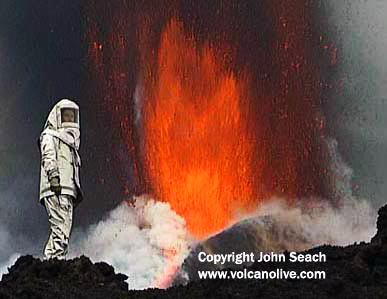
Dr John Seach at summit of Mt Etna. 800 m high lava fountain.
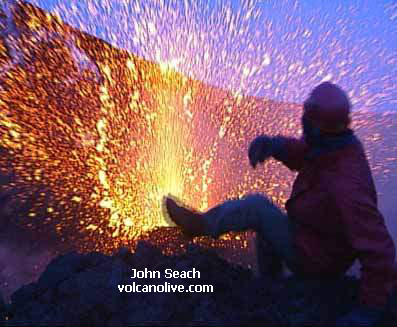
Dr John Seach at Mt Etna volcano, filmed for Discovery Channel documentary 2000.
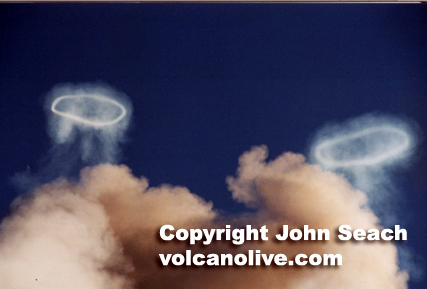
Mt Etna gas rings 2000.
 |
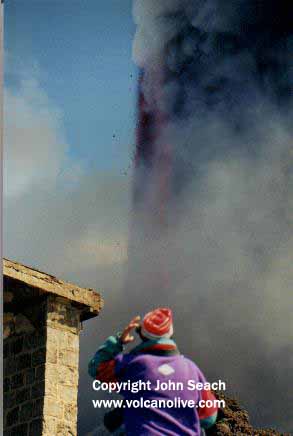 |
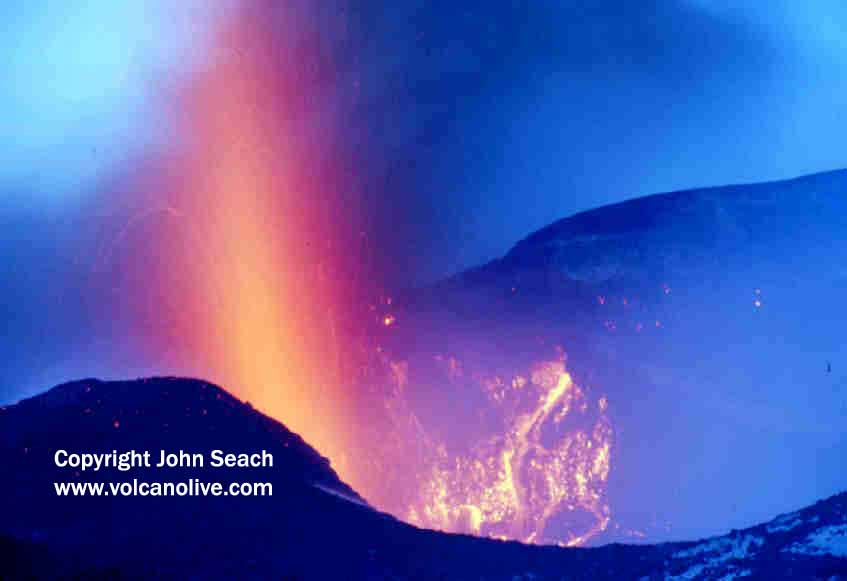
Bocca Nuova eruptions 1999.
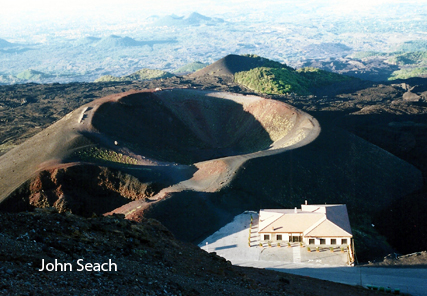
Rifugio Sapienza, Mt Etna.
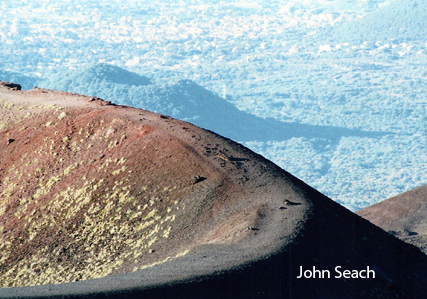
Mt Etna summit craters.
2026 Flank Eruption (ongoing)
Effusive eruption from a fissure in upper Valle del Bove, producing lava flows into the uninhabited valley. Follows intense summit Strombolian activity in late 2025.
2020–2025 Persistent Activity
Hundreds of paroxysmal lava fountaining episodes primarily from Southeast Crater, frequent ash emissions, and occasional short flank effusions. One of the most intense periods in recent decades.
2018–2019 Flank Eruption
Christmas Eve 2018 flank fissure eruption with earthquakes and minor intrusion toward populated areas.
2008–2009 Eruption
Prolonged summit and flank activity with lava flows threatening tourist infrastructure.
2001 and 2002–2003 Flank Eruptions
Significant flank eruptions with extensive lava flows and ash columns.
1991–1993 Eruption
Long-duration flank eruption diverted by barriers to protect towns.
1669 Historic Eruption
Devastating flank eruption that reached Catania, one of the most destructive in recorded history.
Further reading
Bonaccorso, A., Calvari, S., Coltelli, M., Del Negro, C. and Falsaperla, S., 2004. Mt. Etna: volcano laboratory. Washington DC American Geophysical Union Geophysical Monograph Series, 143.
Branca, S. and Del Carlo, P., 2004. Eruptions of Mt Etna during the past 3,200 years: a revised compilation integrating the Historical and stratigraphic records. In Mt. Etna: volcano laboratory. AGU.
Corsaro, R.A. and Pompilio, M., 2023. Petrological monitoring of active volcanoes: A review of the most recent studies at Mt. Etna. Journal of Volcanology and Geothermal Research.